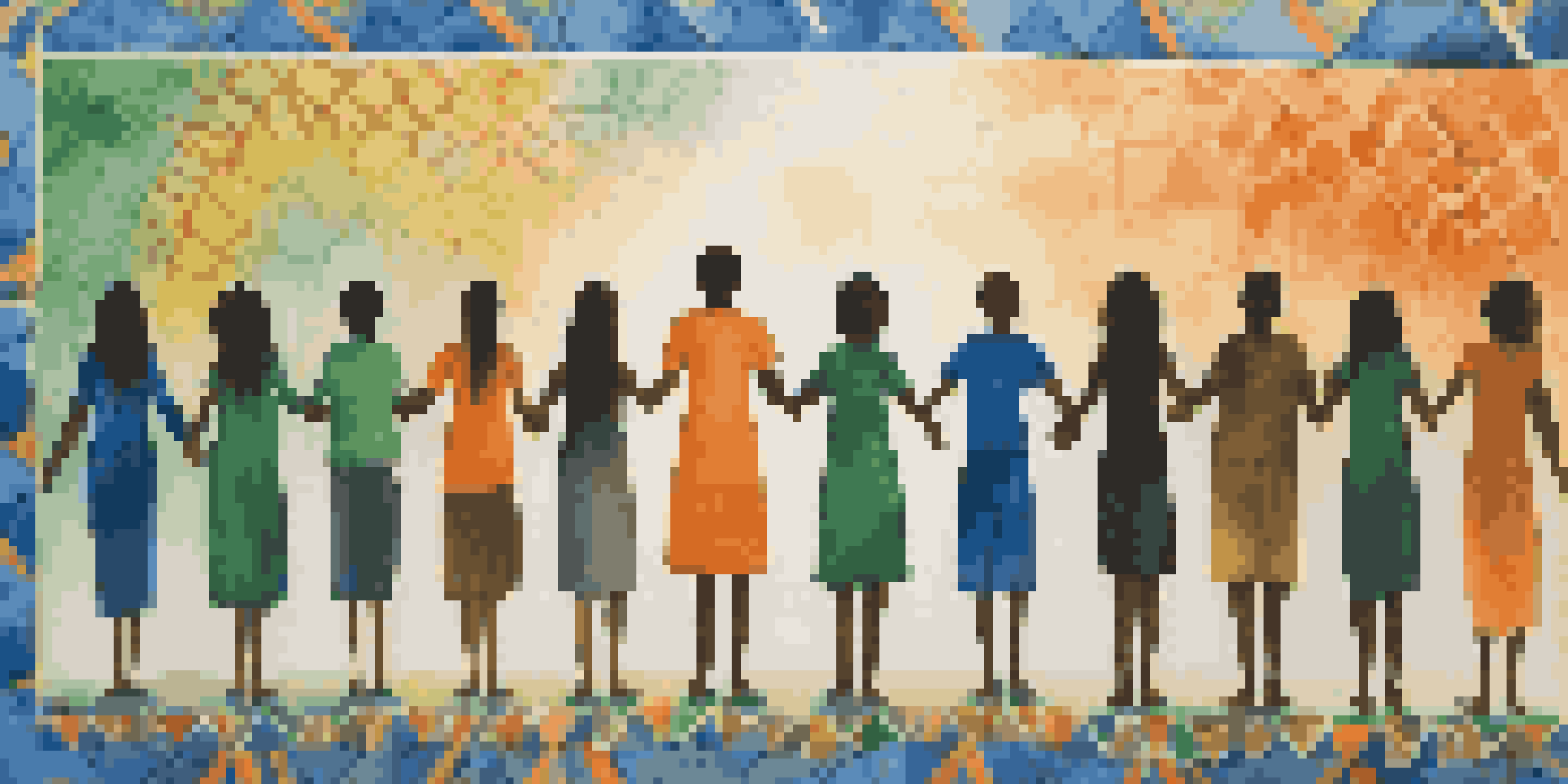Exploring the Role of Digital Art in Social Justice Movements

Understanding Digital Art in the Modern Context
Digital art has become a dynamic medium for expression, utilizing technology to create impactful visuals. Unlike traditional art forms, it can be shared instantly across global platforms, allowing messages to reach wider audiences. This immediacy is crucial in today’s fast-paced world, where social issues demand urgent attention and action.
The Intersection of Digital Art and Activism
Activism and digital art often intertwine, as artists use their skills to raise awareness and provoke thought. For instance, platforms like Instagram and TikTok have become canvases for activists to express their concerns creatively. This blend of art and activism not only captivates viewers but also encourages them to engage with pressing social issues in a meaningful way.
Digital Art Amplifies Activism
Digital art serves as a powerful medium for activists to creatively raise awareness and provoke thought on social issues.
Case Studies: Successful Campaigns Utilizing Digital Art
Several social justice movements have effectively employed digital art to amplify their messages. The Black Lives Matter movement, for example, has seen countless digital artworks that encapsulate the struggle for racial equality. These visuals often go viral, fostering solidarity and inspiring action, proving that art can be a powerful tool for change.
The Role of Social Media in Art Advocacy
Social media platforms serve as an important vehicle for sharing digital art related to social justice. Artists can post their work, engage with followers, and encourage discussions around critical issues. This interaction not only builds a community but also urges others to contribute their perspectives, creating a rich tapestry of voices advocating for change.
Social Media Fuels Art Advocacy
Social media platforms enable artists to share their work, fostering community engagement and discussions around critical issues.
The Emotional Impact of Digital Art on Audiences
Digital art often evokes strong emotions, making it a compelling medium for social justice narratives. A well-crafted piece can resonate deeply, inspiring empathy and action among viewers. This emotional connection can motivate people to participate in advocacy efforts, transforming passive observers into active participants.
Challenges Faced by Digital Artists in Activism
While digital art is a powerful tool, artists face challenges such as censorship and backlash. Many platforms regulate content, leading to the removal of artwork that addresses controversial topics. This creates a dilemma for artists who wish to speak out, forcing them to navigate the fine line between expression and compliance with platform policies.
Emotional Impact Drives Participation
The emotional resonance of digital art can inspire viewers to transform from passive observers into active advocates for change.
Future Trends: Digital Art and Social Justice
Looking ahead, the relationship between digital art and social justice is likely to evolve further. With advancements in technology, such as virtual reality and augmented reality, artists can create even more immersive experiences. These innovations can deepen engagement and understanding of social issues, opening new avenues for advocacy.
Conclusion: Embracing Digital Art for Social Change
Digital art continues to be a vital force in social justice movements, offering an accessible way to communicate complex ideas. As artists leverage technology to share their visions, they inspire communities to stand up for change. Embracing digital art not only enhances advocacy efforts but also enriches the cultural dialogue surrounding justice and equality.